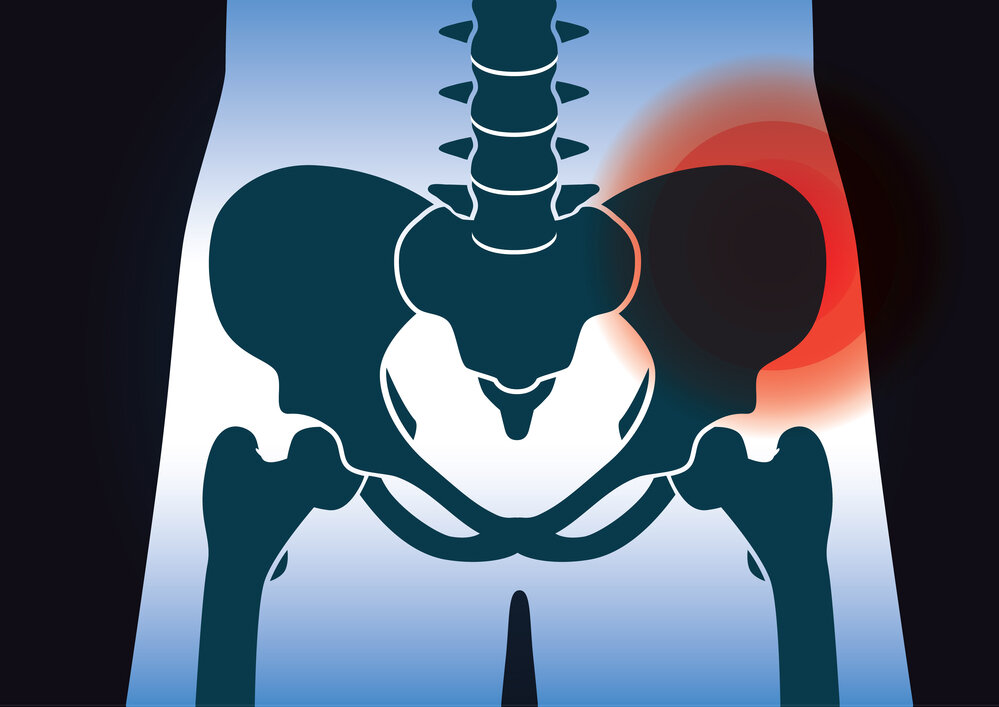
Misalignment during pregnancy can cause pain in the front or back of the pelvis, the low back, hips, legs, and even in the pelvic floor; this is known as pelvic girdle pain (PGP). According to the National Institutes of Health, about 20% of pregnant women experience pelvic girdle pain. This can be anywhere from mild or moderate to completely debilitating. It is relatively common, but contrary to popular belief, women do not need to suffer or even wait until they have their baby, in order to get relief.
Symptoms of Pelvic Girdle Pain
Pelvic girdle pain often begins during pregnancy and is relieved after birth, but occasionally can persist for 3 or more months after pregnancy. Symptoms of pelvic girdle pain may include pain in the buttocks and pubic bone that can radiate into the thigh, hips, or groin areas. Unlike true sciatica, PGP will not radiate past the knee. Women will describe increased pain when moving from one position to another such as going from sitting to standing, also with activities such as with walking prolonged distances or climbing stairs, lunging, or getting out of bed in the morning. The most effective treatment is physical therapy with a physical therapist trained in pregnancy-related musculoskeletal conditions.
What are the treatments for Pelvic Girdle Pain?
In my experience, a lot of women seem to have a “deal with the pain” mentality when it comes to prenatal & postpartum pain. This needs to change; you do not need to suffer. Treatment of pelvic girdle pain is usually quite helpful and most women will feel relief when incorporating the following therapies provided by your physical therapist who like myself, specialize in Women’s health. This includes:
-
Education on ways in which you can move to avoid strain on the region. Your physical therapist will often go through everyday activities with you to help you determine which ones may be aggravating your symptoms and show you how you can do them differently to avoid pain.
-
Exercises to strengthen and stabilize your core muscles. Your core muscles include the abdominal, back and pelvic floor muscles. Proper recruitment and strengthening of these muscles will allow you to adequately support the joints and ligaments that are being strained around the pelvis and hips. It IS safe to perform core exercises both during and after pregnancy, however, it is important to work with a physical therapist or trained professional who can safely progress you through core strengthening, as some exercises can put a lot of strain on the back, abdomen and pelvis. When performed too soon, too aggressively, or with improper mechanics and muscle recruitment, these exercises may do more harm than good.
-
Manual therapy, targeting muscles and joints. This treatment can help with muscles that may be tight from overworking to stabilize joints resulting in persistent pain. In addition, mobilizing joints in the pelvic girdle can shift bones into better position or help them move more normally.
-
The use of support belts and/or other assistive devices. This includes support bands, belts to help stabilize the pelvis, and in some cases, walkers, crutches, and canes. Using these may be temporary until your pain decreases with some of the other modalities, but can also be quite useful when walking longer distances is necessary.
When Should You Get Help?
If you notice pain in the front or back of your pelvis, hips, back, into your leg(s) or pelvic floor during pregnancy or postpartum, mention it to your health care provider. They may recommend seeing a physical therapist. Alternatively, you can contact a pelvic health physical therapy specialist like myself for more information.
Still have questions? Would you like to book an appointment?
If you would like more information or would like to speak to an experienced physical therapist in Miami, Florida, you can contact me via phone at (305)-982-7595, via email at arienne@doctorarienne.com, or simply fill out an online form. To schedule an appointment, click here.
If you enjoyed this blog article or have a specific question about it, shoot me a comment below!
